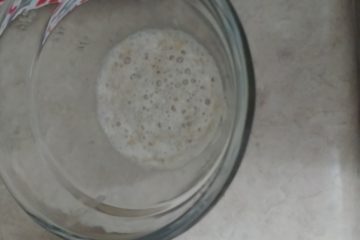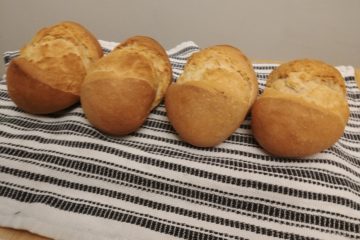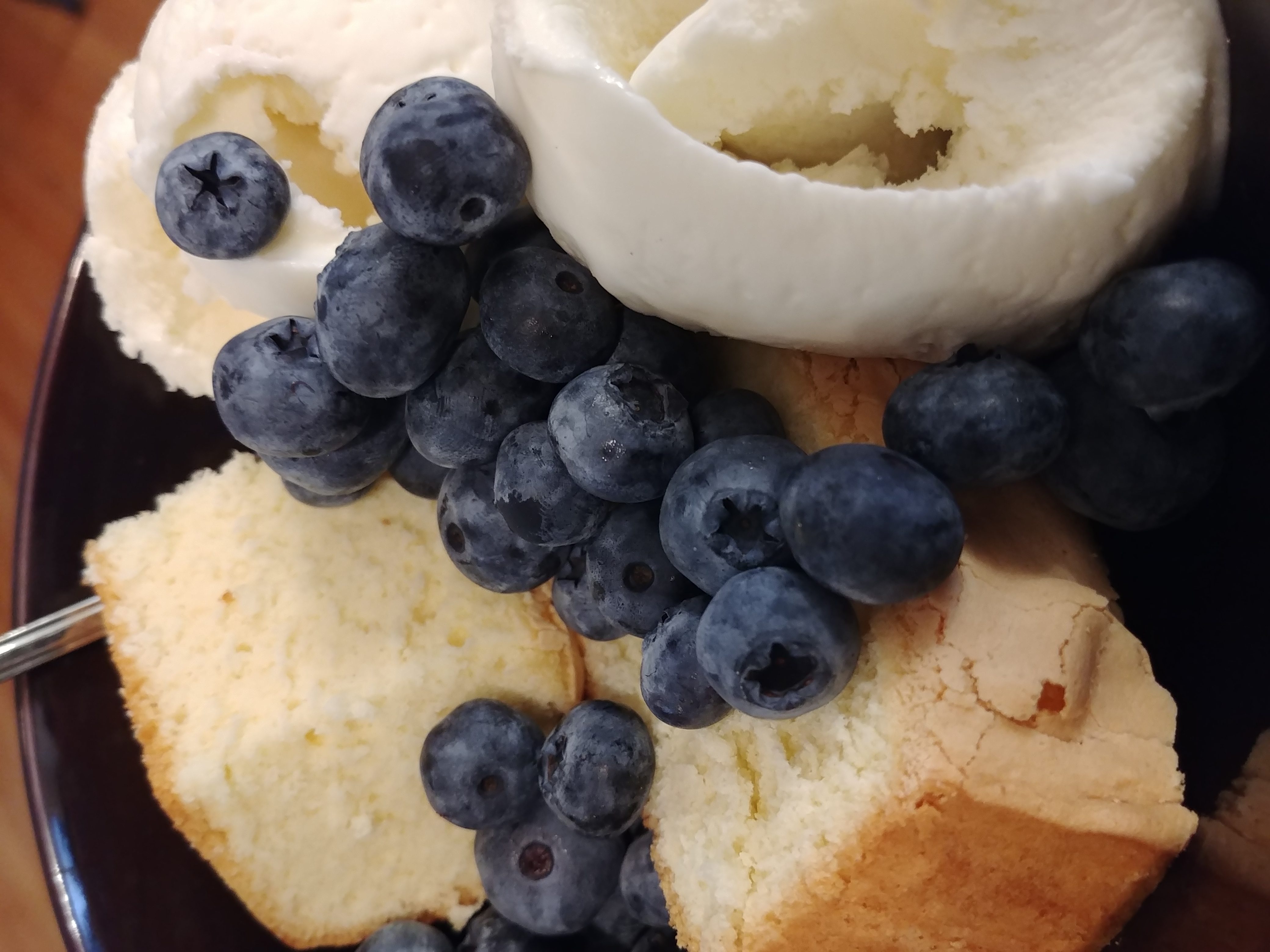3.
This was done for the A&S competition at Lionsdale Champions in June 2009. The competition was “Rhymes with June”. My lady Kayleigh deLeis and I did this together. We won the competition.
Recipe
Original source
The recipe we chose was from A Proper newe Booke of Cokerye which was published in 1557 in England. It is for a dessert tart made with prunes. We found a second source in The Good Huswifes Jewell, published in 1596 in England which we used to add a bit of spice to our adaptation.
To make short paest for tarte.
Take fyne floure and a cursey of
fayre water and a dysche of swete butter and
a lyttel saffron, and the yolckes of two egges
and make it thynne and as tender as ye
maye.
To make a tarte of Prunes.
Take prunes and set them upon a chafer
wyth a little red wyne and putte therto a
manshet and let them boyle together, then
drawe them thorowe a streyner with the
yolkes of foure egges and season it up wyth
suger and so bake it.
(Frere)
To make Tarte of Prunes.
Put your prunes into a pot, and put in
red wine or claret wine and a little faire,
water, and stirre them now and then, and
when they be boyled enough, put them into
a bowle, and straine them with sugar, synamon
and ginger.
(The Good Huswifes Jewell)
Modern Translation
- 12 oz prunes
- 3 cups red wine
- 6 egg yolks
- 1/2 c. sugar
- pie crust
Cook the prunes in wine for about an hour (or until the prunes have plumped and the wine is syrupy). Put prunes though a colander with egg yolks, to remove skins (it may be necessary to also use cheesecloth to collect all the fruit pulp). Add sugar and pour into pie crust. Bake at 350 for 45-60 minutes (until pie has thickened in the center).
(Sullivan)
Our Adaptation
Short Paest
The modern translation we saw first did not specify a pie crust. We found a tart crust listed just a few paragraphs up in the original source document, and so decided to use that one. Our first issue was determining the actual meaning of swete butter, because swete can mean both sweet and suet. As Suet Butter doesn’t seem to have been manufactured prior to the 1800s (since replaced by margarine) we decided that it could mean either sweet butter or suet or butter (or a mixture of the two). Suet is used frequently in British puddings and some crusts, but appears to be interchangeable with butter. Because the translation “sweet butter” made much more sense that “suet butter” in that this is supposed to be a dessert tart, rather than an entree pudding we opted to use unsalted sweet cream butter.
- 1 ½ – 2 cups Flour
- 3/8 cup Water
- 4 tbsp Unsalted sweet cream butter
- Pinch Saffron (optional)
- 2 Egg Yolks
- Lightly grind the saffron in your fingers and add it to the water, allow to diffuse
- Add butter and the egg yolks to the flour, mix till it binds together a little
- Add water till it forms a nice dough, not too sticky
- Cover and let sit for 10-30 min
- Roll out
Tarte of Prunes
Manset (more properly Manchet) is a kind of white bread which in this case we think was used to thicken the filling of the tart (Albala 92). We have run across bread as a sauce thickener frequently, used in the same way, so we saw no reason not to assume that its purpose was the same. We decided that beyond that, the modern recipe seems to be accurate. We also reduced the number of eggs back to the amount called for in the source document, as we figured that the two extra egg yolks had been added to compensate for the lack of bread.
- 12 oz Prunes
- 3 cups Red Wine
- 3 slices White Bread
- 4 Egg Yolks
- ½ cup Sugar
- 1 tsp cinnamon
- 1 tsp ginger
- Slice the bread up very small
- Put prunes and bread into a pot with the wine (you may cut up the prunes if you would like)
- boil it for about an hour (it should be like syrup)
- Remove from heat
- Add egg yolks and pour through strainer
- Stir in sugar and spices
- Pour into pie crust
- Bake at 350 for 45-60 min, or until center has thickened
Final Notes
We would like to acknowledge Kristen Sullivan (Lady Avelyn Grene) for the asset her website, The Commonplace Boke of Lady Avelyn Green, was in tracking down this recipe, and for her redaction of it.
Works Cited
Albala, Ken. Cooking in Europe 1250-1650. Santa Barbara CA: Greenwood Publishing Group, 2006.
Frere, Catherine Frances, ed. A Proper newe Booke of Cokerye. Cambridge: W. Heffer & Sons Ltd., 1913.
Sullivan, Kristen. “Tarte of Prunes.” The Commonplace Boke of Lady Avelyn Grene. 27 May 2009 <http://www.greneboke.com/recipes/prunes.shtml>.
“The Good Huswifes Jewell.” 20 December 2008. Medieval Cookery. Ed. Daniel Myers. 8 June 2009 <http://www.medievalcookery.com/notes/ghj1596.txt>.


